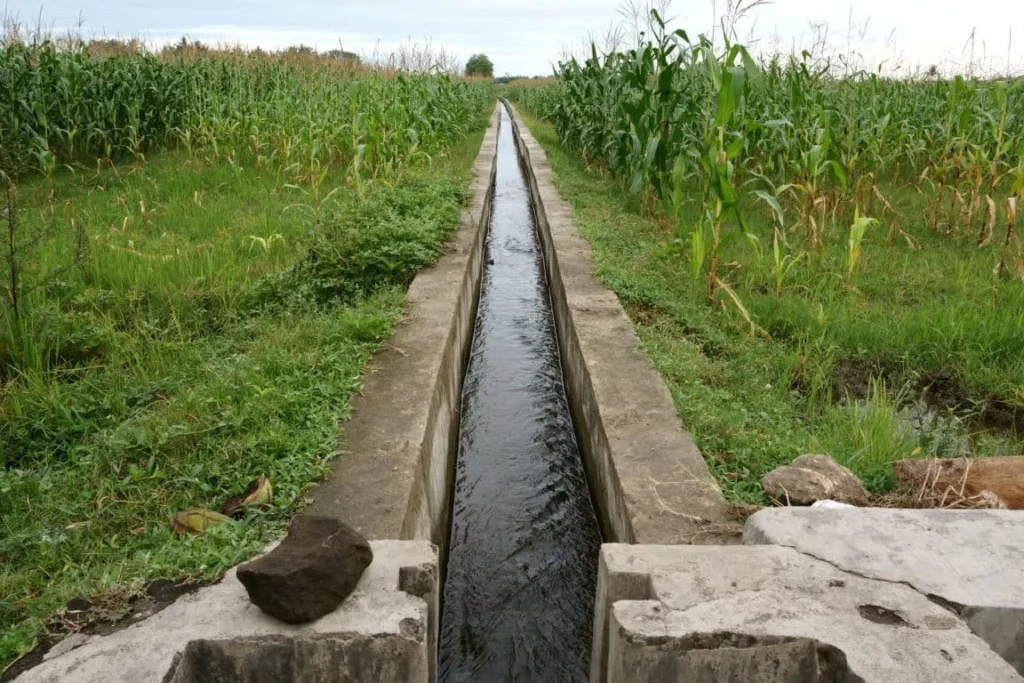
Imagine standing in the arid landscapes of Morocco’s Souss-Massa region, where the sun beats down relentlessly, and water is as precious as gold. Farmers here have long faced the challenge of coaxing life from dry soils, battling water scarcity and unpredictable rains. Yet, amidst these challenges, a quiet revolution is unfolding. From ancient khettara systems to cutting-edge nanotechnology, Moroccan farmers are embracing innovations that are transforming agriculture, ensuring sustainability, and boosting productivity. This blog post takes you on a journey through the innovations in Moroccan irrigation systems, weaving together stories, expert insights, and practical advice to showcase how this North African nation is leading the way in water-smart agriculture.
The Historical Roots of Moroccan Irrigation
Morocco’s agricultural story begins centuries ago with the khettara, an ingenious underground irrigation system that channels water from aquifers to fields through gravity-fed tunnels. I first learned about khettaras while visiting an oasis in the Tafilalt region. A local farmer, Ahmed, showed me the ancient tunnels his community still maintains, explaining how they’ve sustained crops for generations. These systems, also known as qanats, are a testament to Morocco’s historical ingenuity in managing scarce water resources. According to a study on qanat systems, khettaras remain in use in regions like Tafilalt and Marrakech, supporting oasis agriculture despite modern challenges like groundwater depletion.
However, traditional methods like khettaras are not enough to meet the demands of modern agriculture. Morocco’s semi-arid climate, with rainfall as low as 200mm annually in some southern regions, necessitates innovative solutions. The country’s agricultural sector, which accounts for 50% of rural employment and 75% of agricultural exports, faces increasing pressure to produce more with less water, especially as climate change intensifies droughts.
The Shift to Modern Irrigation: Drip and Sprinkler Systems
In the early 2000s, Morocco embarked on a transformative journey with the Green Morocco Plan (Plan Maroc Vert), a national strategy to modernize agriculture and save water. One of the plan’s cornerstones was the widespread adoption of drip irrigation, a system that delivers water directly to plant roots, minimizing waste. I recall visiting a citrus orchard in the Haouz region, where a farmer named Fatima proudly showed me her new drip system. “Before, we lost so much water to evaporation,” she said. “Now, every drop counts.”
Drip irrigation has been a game-changer, with studies showing up to 47% water savings and 69% increases in crop yields. The system uses a network of pipes and emitters to deliver precise amounts of water and nutrients, reducing runoff and improving efficiency. Sprinkler systems, which mimic rainfall, have also gained traction, particularly in larger farms. These systems are designed for uniform water distribution, though they require more energy than drip systems.
- Drip Irrigation Benefits: Precise water delivery, reduced evaporation, and improved nutrient uptake.
- Sprinkler System Advantages: Suitable for large fields, mimics natural rainfall, and supports diverse crops.
- Challenges: High initial costs and maintenance needs can deter smallholder farmers.
Nanotechnology: The Next Frontier in Irrigation
In the Souss region, a young entrepreneur named Meryam El Ouafi is pushing boundaries with nanotechnology. Her company, GEMS, has developed a nano-irrigation system that uses porous nanotubes to release water slowly to plant roots, reducing consumption by 50–80% compared to traditional methods. I met Meryam at a startup conference in Agadir, where she passionately described her vision: “We’re not just saving water; we’re empowering farmers to thrive in harsh conditions.”
This technology, known as Moistubes, operates at low pressure and requires no pumps or electricity, making it ideal for remote areas. Research from the National Institute of Agricultural Research in Morocco highlights its potential to revolutionize small-scale farming, particularly in arid zones. However, adoption faces hurdles like high upfront costs and limited technical know-how among farmers.
Green IoT: Smart Irrigation for a Digital Age
The rise of artificial intelligence (AI) and the Internet of Things (IoT) is transforming Moroccan agriculture. In the Fez-Meknes region, farmers are using Green IoT-based irrigation systems to optimize water use. These systems rely on sensors and machine learning to monitor soil moisture, weather patterns, and crop needs, adjusting irrigation schedules in real-time. A farmer I spoke with in Meknes, Khalid, explained how his IoT system saved him 30% on water bills while boosting his olive yield by 20%.
The Moroccan Ministry of Agriculture is collaborating with tech firms to scale these solutions, aiming to enhance sustainability and reduce food insecurity. However, challenges like limited internet access in rural areas and the need for farmer training remain. A study on IoT adoption notes that factors like trust, perceived ease of use, and access to credit significantly influence farmers’ willingness to adopt these technologies.
Integrating Aquaculture with Irrigation
One of the most intriguing innovations is the integration of aquaculture into irrigation systems. In arid regions, where water storage basins are common, farmers are experimenting with using these basins for fish farming. The nutrient-rich fish effluents are then used to irrigate crops, creating a closed-loop system that conserves water and provides natural fertilizers. A research paper on this technique suggests it could enhance water efficiency and diversify income for farmers.
I visited a pilot project in the Marrakech region, where a farmer named Hassan was raising tilapia in his irrigation basin. “The fish waste feeds my crops, and the crops clean the water for the fish,” he explained. This symbiotic approach not only saves water but also reduces the need for chemical fertilizers, aligning with Morocco’s push for sustainable agriculture.
Public-Private Partnerships and Policy Support
Morocco’s irrigation innovations are bolstered by strong public-private partnerships (PPPs). The World Bank has supported projects like the National Irrigation Water Saving Program (PNEEI), which has modernized infrastructure for 21,000 hectares and benefited over 7,800 farmers. These initiatives provide subsidies, training, and access to technology, making advanced systems more accessible to smallholders.
The government’s commitment is evident in policies like the Green Morocco Plan, which aims to save 1.4 billion cubic meters of water annually. However, social engineering—mobilizing farmers to adopt and maintain these systems—remains a challenge. As one agricultural official told me, “Building pipes is easy; changing mindsets takes time.”
### Comparing Moroccan Irrigation Systems
| Irrigation System | Water Efficiency | Cost | Suitability | Adoption Rate | Key Benefits | Challenges |
|---|---|---|---|---|---|---|
| Khettara | Low | Low | Small-scale, oasis farming | Low (heritage use) | Sustainable, no energy needed | Labor-intensive, limited scalability |
| Drip Irrigation | High (47% savings) | High | Small to medium farms | High (7,800+ farmers) | Precise, reduces waste | High maintenance, cost barriers |
| Sprinkler | Moderate | Medium | Large farms | Moderate | Uniform distribution | Energy-intensive, evaporation losses |
| Nano-Irrigation | Very High (50–80% savings) | High | Small-scale, arid zones | Low (emerging) | Low energy, efficient | Limited awareness, cost |
| Green IoT | High | Very High | Tech-savvy farms | Low (growing) | Real-time optimization | Requires internet, training |
Barriers to Adoption and Solutions
Despite these innovations, adoption rates vary. A study in the Souss-Massa region found that age, education, farm size, and access to credit influence farmers’ willingness to adopt new technologies. Older farmers, for instance, may resist change due to familiarity with traditional methods, while younger farmers like Khalid are more open to IoT systems.
- Financial Constraints: Subsidies and microloans can offset high initial costs.
- Technical Skills: Training programs, like those offered by the World Bank, can bridge knowledge gaps.
- Infrastructure: Expanding rural internet access is critical for IoT adoption.
The Environmental and Economic Impact
These innovations are not just about saving water; they’re about building resilience. In the Tadla region, drip irrigation led to a 43% reduction in groundwater use and up to 166% increase in production for small farms. Economically, irrigated agriculture contributes half of Morocco’s agricultural GDP, underscoring its importance. Environmentally, reduced water use and chemical inputs align with global sustainability goals, as noted in a Chatham House report.
However, intensification can increase overall water consumption as farmers expand production. Balancing productivity with conservation remains a key challenge, requiring ongoing research and policy refinement.
Stories from the Field
To bring this to life, let’s revisit Fatima, the citrus farmer from Haouz. After adopting drip irrigation through a government subsidy, her orchard’s yield doubled, allowing her to send her children to school. Similarly, Hassan’s aquaculture project not only boosted his income but also inspired neighboring farmers to experiment with similar systems. These stories highlight the human impact of innovation, transforming livelihoods and communities.
FAQ: Common Questions About Moroccan Irrigation Innovations
Q: What makes drip irrigation so effective in Morocco?
A: Drip irrigation delivers water directly to plant roots, reducing evaporation and runoff. It’s particularly effective in Morocco’s arid climate, saving up to 47% of water and boosting yields by up to 69%.
Q: Are traditional systems like khettaras still relevant?
A: Yes, khettaras are sustainable and require no energy, making them ideal for remote areas. However, their labor-intensive maintenance limits scalability.
Q: How does nanotechnology improve irrigation?
A: Nanotechnology, like Moistubes, uses porous tubes to release water slowly, cutting consumption by 50–80% and eliminating the need for pumps or electricity.
Q: What role does AI play in Moroccan agriculture?
A: AI and IoT systems monitor soil and weather conditions, optimizing irrigation schedules to save water and increase yields. They’re still emerging due to connectivity challenges.
Q: How can smallholder farmers afford these technologies?
A: Government subsidies, microloans, and PPPs, like those supported by the World Bank, make technologies more accessible.
Conclusion: A Blueprint for the Future
Morocco’s journey in irrigation innovation is a story of resilience, ingenuity, and hope. From the ancient khettaras to AI-driven smart systems, the country is blending tradition with technology to address one of its greatest challenges: water scarcity. Farmers like Fatima, Hassan, and Khalid are not just adapting to change—they’re driving it, proving that even in the harshest conditions, sustainable agriculture is possible.
For readers inspired by these innovations, consider exploring how similar solutions could apply in your region. Support local farmers by advocating for policies that fund sustainable practices, or dive into research on water-saving technologies. Morocco’s example shows that with collaboration, innovation, and determination, we can cultivate a greener, more resilient future. Let’s take these lessons and plant the seeds for change, one drop at a time.
